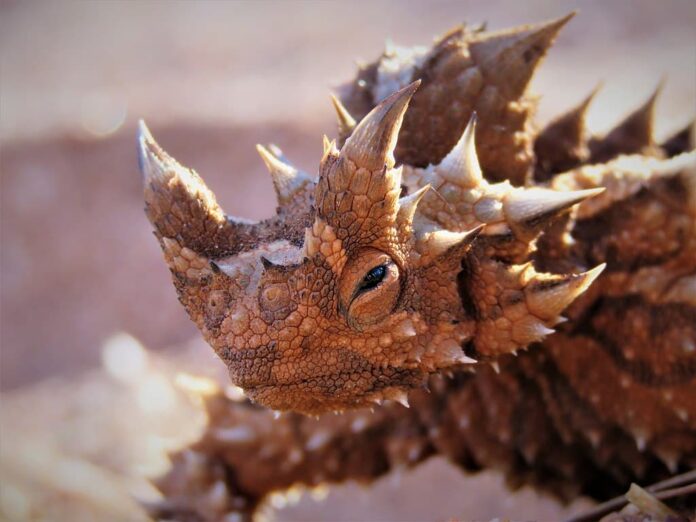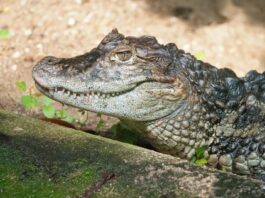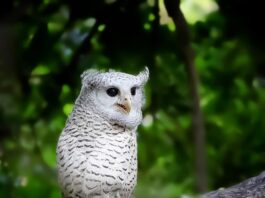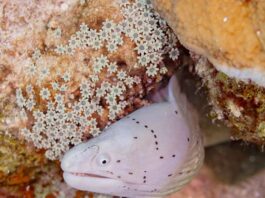There are many spiny animals in the world, and those prickles are quite helpful for their self-defense. Some of these thorny animals are super cute while the others are more of the opposite. I put together this list to show you some of the most interesting prickly animals in the world. From spiny land animals to spiny water animals, you will find them all below.
1Armadillo Lizard
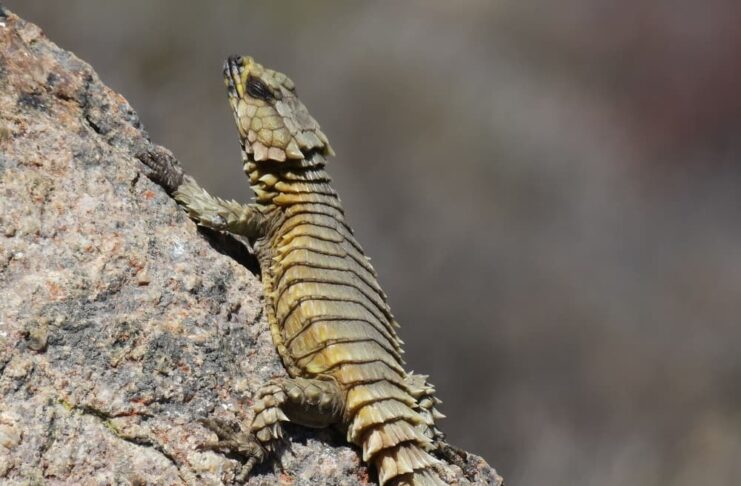
Looks like a mini dragon, armadillo lizards have a very interesting and stunning appearance. Their flat body is covered with square-shaped scales which they use as protection just like armadillos. When threatened, it forms a ball by rolling on its back and biting its tail to protect its soft underbelly. It uses the bony scales and hard spines as protection, and it remains in this position until it feels safe. Such an act makes it looks like the mythical ouroboros serpent; hence, its scientific name is Ouroboros Cataphractus.
The armadillo lizards are diurnal, so these omnivores are active during the day. With the help of their excellent sense of smell, they are able to find prey with ease. Their meal consists of termites mainly, but they also feed on millipedes, scorpions, spiders, and plants. These spiny lizards only live in deserts, dry areas, rocky areas, and scrublands on the western coast of South Africa. Their population is declining due to the illegal reptile pet trade which is their main threat and leads to their future extinction.
2Crown Of Thorns Starfish
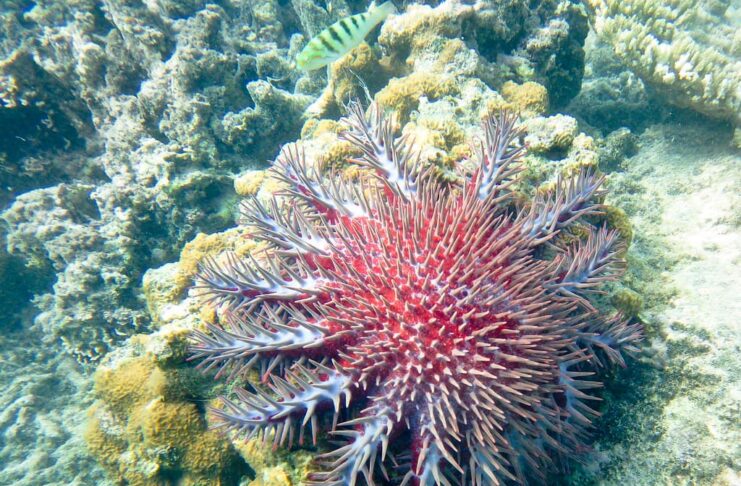
While most starfish are cool-looking and harmless, this spiny starfish goes a different way. This starfish species has thorn-like spines that cover its upper surface, and those spines are venomous. Apart from being a venomous starfish, it is also among the largest starfish in the world. The crown of thorns starfish is common in Australia, the land of dangerous animals that we all know about.
Another different yet fascinating thing about this starfish is that it has between 7 to 23 arms. Each arm all covered in those spooky spines, and that is one way to limit their predators. In spite of the literally striking appearance, this starfish species still have some predators. Those are harlequin shrimp, humphead wrasse, giant triton snail, and titan triggerfish. The cool part is that these starfish can regrow an arm if it loses one, and the process takes around 6 months.
3Echidna
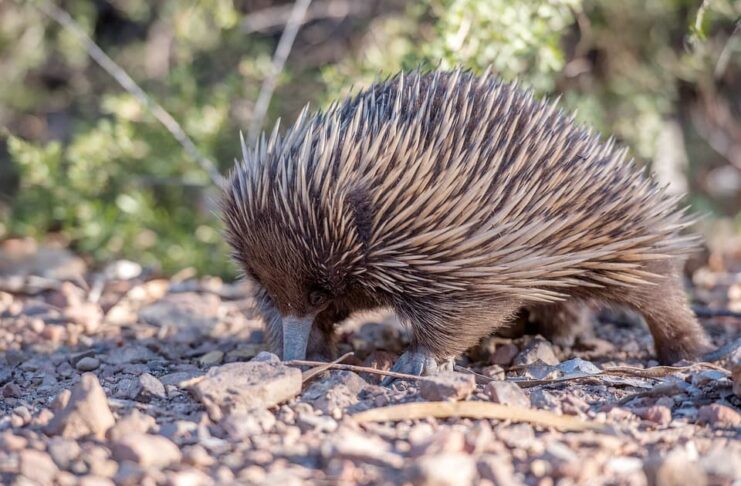
Echidna, the spiny anteater, is one of the rare animals that remain unchanged since prehistoric times. The special thing about these unusual mammals is that they have a number of combinations of unique features. An echidna is a mammal that has a beak like a bird, spines like a porcupine, and pouch like a kangaroo. Even more fascinating, these mammals lay eggs. There are only 5 mammal species that lay eggs, 4 of them are echidna species.
You might think that their spines work as defending weapons just like a porcupine’s. Actually, no. The spines of an echidna are modified hairs, and there is fur between those spines that offer insulation. Plus with their strong limbs and large claws, these spiny animals are powerful diggers. This is why they can adapt and survive for millions of years. Also, they are not dangerous at all so handling one is perfectly safe.
4Hedgehog
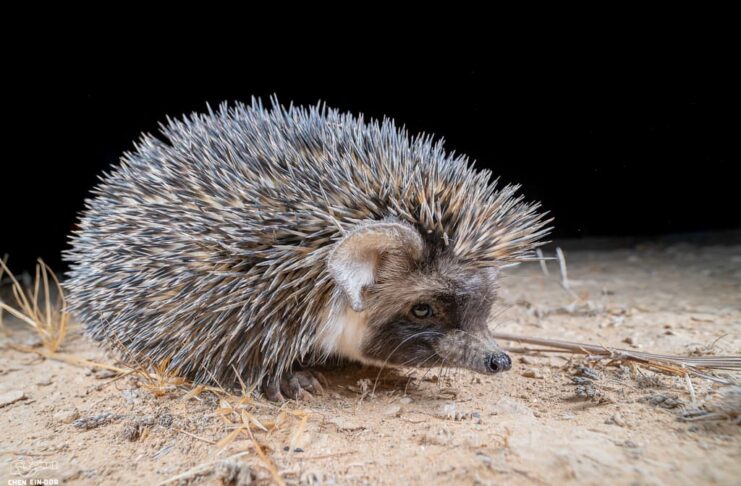
This little spiny mammal is one of the most popular pets among people out there. Hedgehogs are adorable and tiny, and their small body is covered with up to 7,000 quills. Those spines are part of their defense mechanism which they can raise and lower in different situations. When threatened, a hedgehog will curl up into a ball and raise up its spines to protect itself. Once relaxed, those spines are harmless which means you can safely pet or touch them. In case you wonder, those spikes are not poisonous at all because the inside of the quills is actually hollow. So if you want one as a pet, go ahead. There are only a few things to be aware of regarding handling them which are quite simple.
5Lionfish
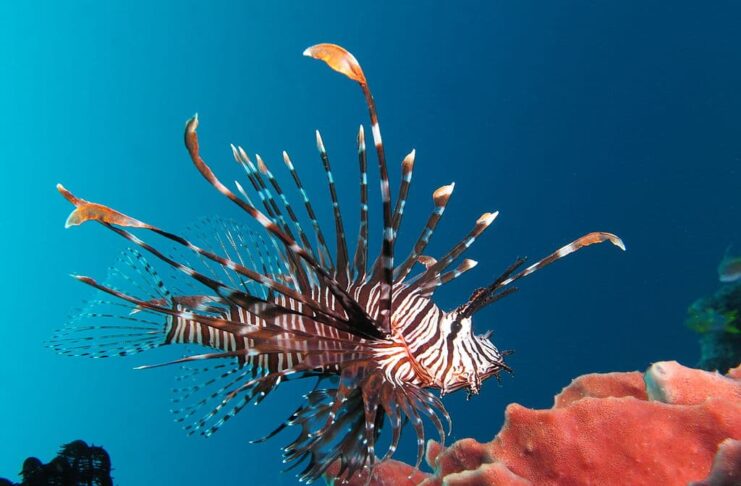
Looking all majestic and stunning, the lionfish is one ferocious predator and spiny fish to fear. As you can see, this fish has these pectoral fins that they can stretch out to trap their prey. Then it will lunge and swallow it in just one single bite. The parts that are dangerous to humans and other fish are the 18 venomous spines on their bodies. Those spines are capable of penetrating human skin, and it delivers excruciating pain.
The thing is that lionfish do not use their venom to attack humans at all. This is why there have never been fatality reports from a lionfish envenomation. The venomous spines that they have are for self-defense purposes only, so you will be safe if you maintain your distance. There are also people who like to eat them, and lionfish contains a great amount of heart-healthy omega-3 fatty acids.
6Porcupine
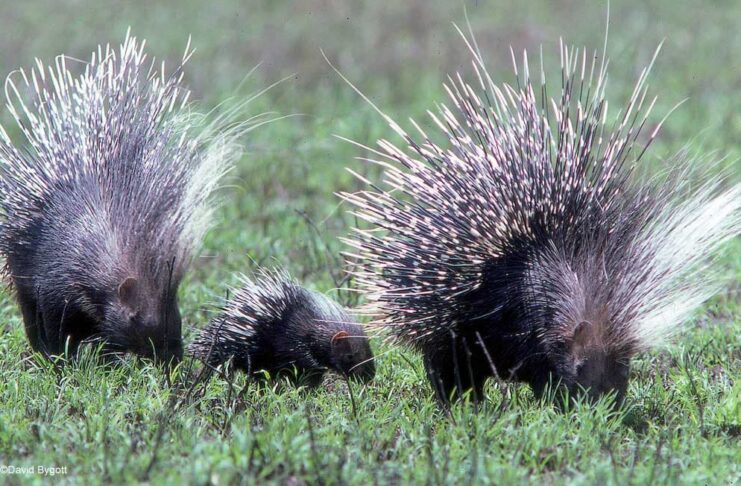
A rodent with long and sharp quills on its back is definitely a dangerous spiny animal to not mess with. There are approximately 30,000 quills on a porcupine’s body along with soft hair that covers its back, sides, and tail. When a porcupine feels threatened, it will tense up and attack the predators by swatting its tail. At the same time, they will raise those quills and try to move closer to embed them into the predator’s skin.
And no, porcupines cannot shoot their quills out of their backs. Before attacking, a porcupine will shake and rattle their quills as a sign of warning to the potential predators. If that does not work, they will charge backward using their quills as both a shield and a weapon. Since there are barbs (between 700 and 800) on the quills, the removable process is difficult and quite painful. The good thing is each quill has a topical antibiotic, so a porcupine attack will not lead to an infection at all.
7Porcupine Fish
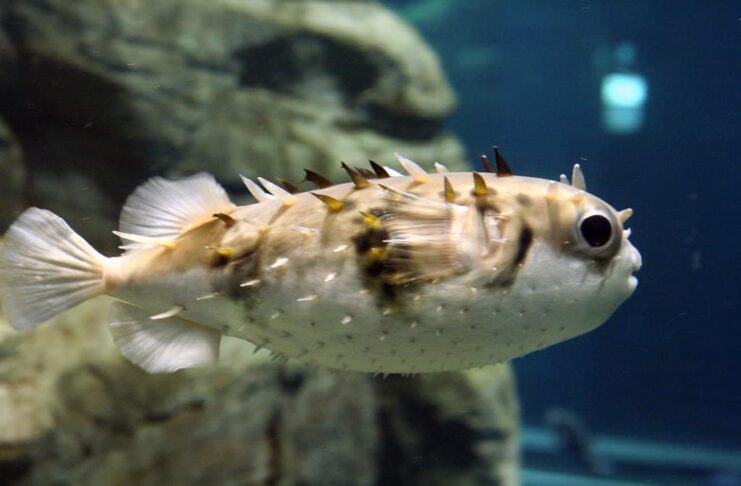
Most people think that a porcupine fish and a pufferfish are the same, but they are not. A porcupine fish don’t have hidden spines, instead, they have large external spines; hence their name. One of the similarities that both fish share is the fact that they can puff their bodies. The large spines of a porcupine fish point outward, and they look extra scarier when it puffs its body. This is another reason why only the bravest fish like sharks would dare to eat them. Also, both fish are lethal to consume without proper preparations.
8Puffer Fish
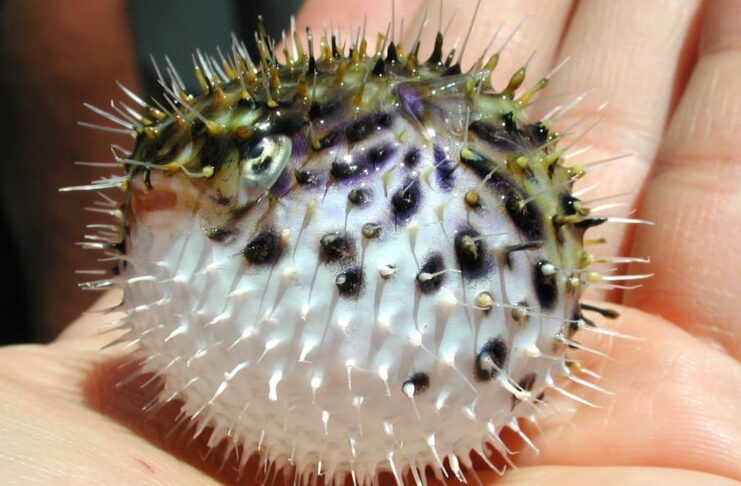
You cannot see a puffer fish’s spines unless they puff up which is their method to evade predators. Most pufferfish species have spines from head to tail, and they are toxic to consume for both other animals and humans. The toxic substance that their body contains make them deadly and foul-tasting to other fish. To humans, there is enough poison in pufferfish to kill 30 adult humans. Meanwhile, pufferfish are considered a delicacy so it is very expensive to eat them. That is because it is required extremely skilled and specially-trained chefs to safely prepare and serve them.
9Scorpion Fish
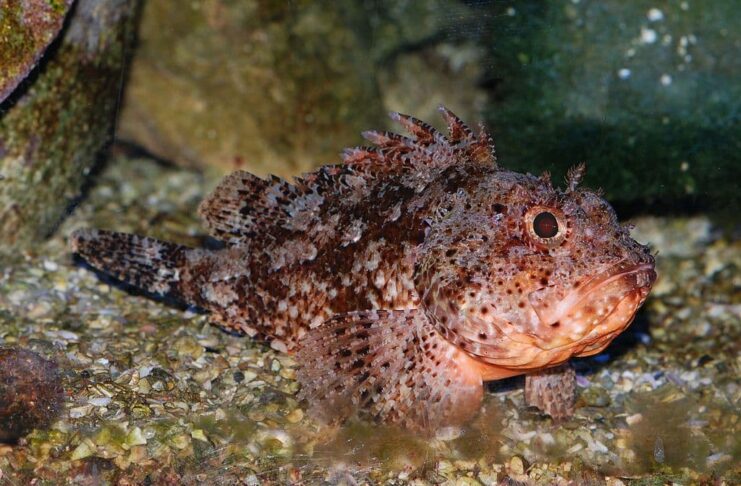
With a more common name as stonefish, scorpionfish is one of the spiny animals in the sea. These prickly marine fish have large and spiny heads, and the appearance of its species can blend among rocks very well. Since they are ambush predators, the ability to camouflage like that is very helpful for their daily feeding. At the same time, it is also quite dangerous for humans because stepping on one of these is not pleasant.
Along with the spiky heads, scorpionfish also have spines on their fins. Those spines, with or without venom depending on the species, can still cause deep and painful wounds. Just like its relative the lionfish, this species can cause equal pain. Even worse, the Reef Stonefish is the most venomous fish in the world. Without medical treatment on time, the chance of survival from their venom is very slim. So try not to provoke this fish if you see one, and be careful when walking on the sea bed.
10Sea Urchin
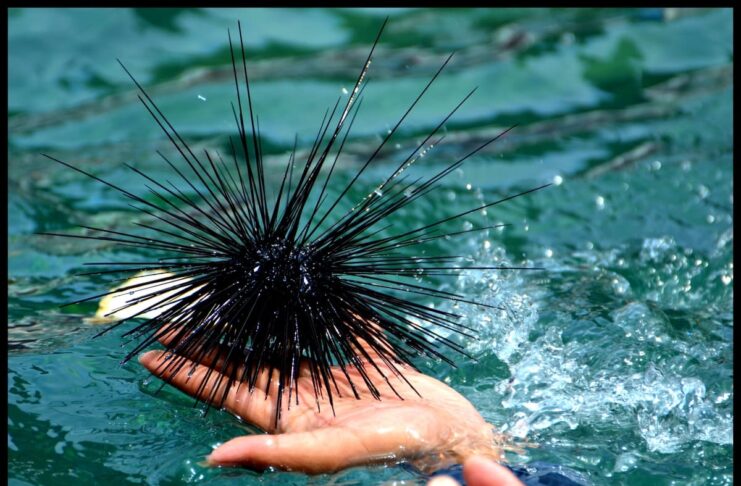
Although sea urchins live on the sea floor because they cannot swim, there are still people who are injured by them. Things are so simple, people usually step on them or accidentally handle one thinking the spines are not dangerous. Think again if you see a sea urchin when you scuba dive or swim deeper in the sea. That is because the stings from their spines can be severe, and the severity depends on their species.
The hard and spiny shell that sea urchins have are their main defense against predators, and it is very effective. Those spines can cause painful punctured wounds, and the spiky brittles, of course, contain toxins. The common results are breathing problems due to the toxin reaction. Also, the patients have to make sure that it is properly removed to prevent further problems.
Sea urchins are very interesting sea creatures, mainly for their bright colors and their spines. You can find them in a wide range of colors such as blue, brown, green, orange, pink, purple, red, white, etc. These spiny animals look just like cartoon characters, and you can easily identify them if you see one.
11Spiny Orb-Weaver
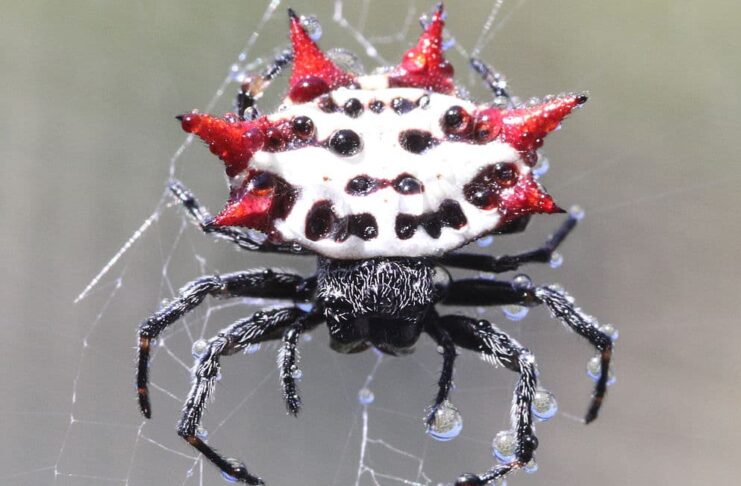
The combination of unique spines with bright colors makes spiny orb-weavers fascinating spiders to look at. Females of this species have 6 prominent spines on their shell-like abdomens, and their body colors can be red, yellow, white, etc. As for male spiny orb-weavers, they have neither bright colors nor spines so you know it is a female when you see one. However, in general, these spiny spiders are harmless and non-aggressive. They do bite, only when picked up or provoked, and there are no serious symptoms from the bites at all. The spiny orb-weavers are actually beneficial spiders because they feed on insects that damage crops and garden plants.
12Thorny Devil
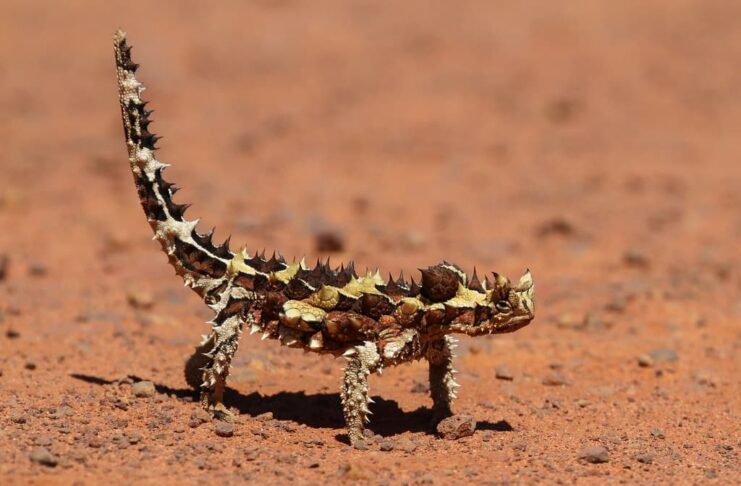
Here you are looking at another dragon with more visible and longer spikes on its body. It also goes by the name of the thorny devil or thorny dragon due to the two large horned scales on its head. By the look, you can already that these lizards are quite intimidating. In fact, this appearance plays a lot of parts in helping it to defend itself from predators. Along with that, these spiny features also help with camouflage since their habitats are in the deserts.
As desert dwellers, these walking durians feed only ants; with up 3,000 ants per meal. With the help of their sticky tongues, capturing and eating ants is not a problem. If you actually get close and grab one, you can see that the spines of thorny lizards are hard and sharp. Should any predators try to grab a bite, that will be a big mistake to make. However, they are still prey to a few predators such as goannas (lizard species) and wild birds.
Related Post: Animals With Special Armors

